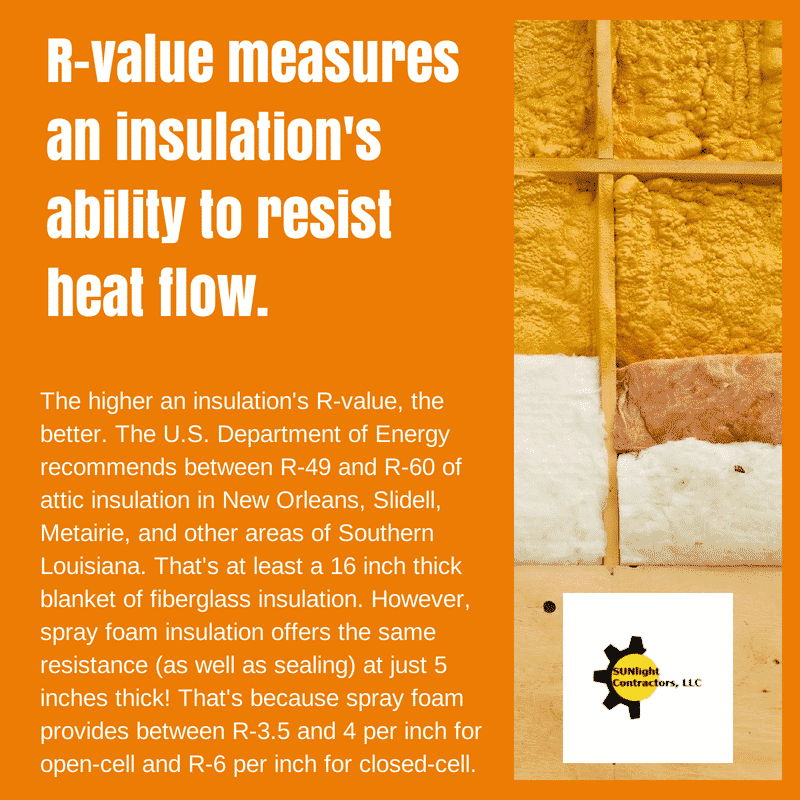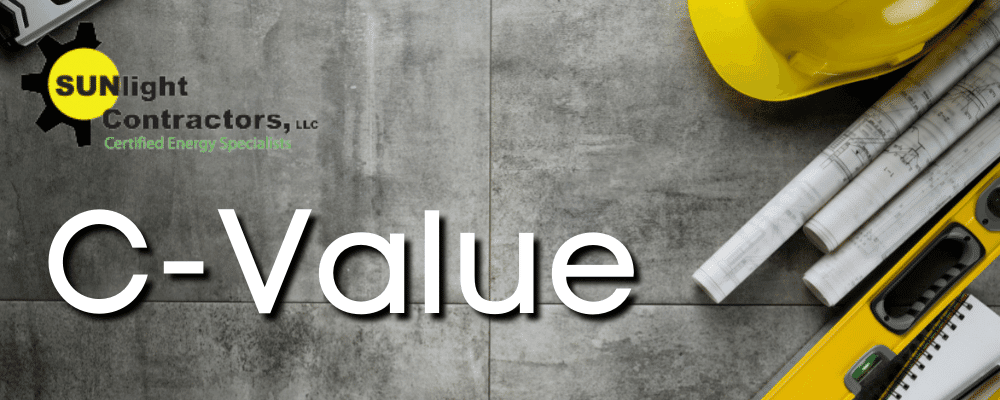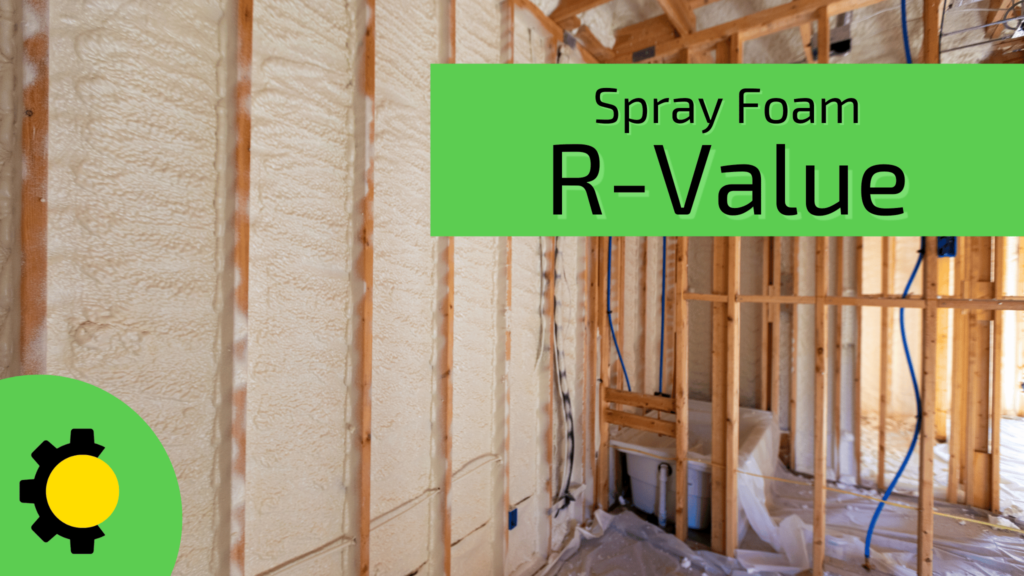If you’ve never looked into insulation or don’t have experience with it, then you’re probably not familiar with R-Value. However, before you decide on what insulation to use for your home, you should know about R-Value. And that’s what we’re here for!
To help give you a solid understanding, we’ve put together this guide. We’ll explain what exactly R-Value is and why the rating is so important. Most importantly, we’ll show you that when it comes to the R-Value of spray foam, nothing else compares.
What is R-Value?
So, what makes R-Value so important? Well, it’s the measurement of an insulation’s thermal resistance. Basically, it tells you how effective it is. The higher the R-value, the more effective the insulation in preventing heat transfer.

The Bottom Line on R-Values
As far a R-Value is concerned, nothing comes close to polyurethane foam insulation. Because of this, spray foam is hands down the best option for reducing air leakage when compared to other insulation. However, there isn’t just one type of spray foam insulation, and each type has its own R-Value.
Types of Spray Foam Insulation
We’ve established that when it comes to R-Value, spray foam insulation is the way to go. Now let’s dig into the different types and what they offer in the way of R-Value.
When researching spray foam insulation, there are two types you’ll come across: open cell and closed cell.
Closed-cell Spray Foam
According to Green Building Advisor, closed-cell spray foam insulation provides an R-value of 6.5 per inch. For reference, other types of insulation, like cellulose and fiberglass, only offer an R-Value of 3.5 to 3.7 per inch.
Additionally, closed-cell spray foam’s air-tight seal decreases air leakage, moisture buildup, and termite damage. Not to mention what it does for strengthening the structure of your home.
Overall, closed-cell spray foam is the highest R-Value insulation. This superior R-Value makes closed-cell spray foam insulation ideal for sealing crawl spaces and other outdoor environments.

Open-cell Spray Foam
Open-cell spray foam’s texture, its tiny interconnected bubbles, has an R-Value between 3.4 to 3.5 per inch. This means that a home experiences improved temperature consistency after spray foam has been installed. This helps reduce heating and cooling costs.
Open-cell spray foam insulation also seals cracks and crevices that allow the passage of air through your home.
This makes open-cell spray foam especially valuable in attics where high temperatures in the summer force hot air through gaps. That hot air doesn’t just affect your comfort. It also distributes dust, mildew, and other allergens from the attic throughout the rest of your home.
How long does spray foam R-value last?
When first installed, the R-value of closed-cell spray foam insulation is actually about 10 for a one-inch thickness. Overtime, typically around six months, it will drop to 6.5, then stabilize. It’s able to retain its still-way-higher-than-all-other-insulations R-Value of 6.5 for decades.
Industry experts suggest that other types of insulation can suffer huge (up to 50%) and permanent R-value loss over time. Especially those that can absorb moisture and “mat down”.

Is Closed-cell Spray Foam the Only Way to Go?
Of course, closed-cell may not be the best choice for Louisiana attic insulation. This is because it would make detection of leaks impossible should they occur. In such cases, open-cell spray foam, with a density of .05 per square inch, would be a better choice.
Sunlight typically recommends 5.5-7.5 per inch depending on the application. Both closed and spray polyurethane foam insulate and act as an air barrier. They keep your home comfortable and reduce heating and cooling costs for the life of your home.
Another Insulation Value to Consider
But remember, in addition to R-value, you should also consider a little something that you could call C-Value. The C-Value is the value of your contractor! As with any type of insulation, the product is only as good as its installer.
Sunlight Contractors have a proven reputation for consistently excellent professional results – with hundreds of five-star reviews.

CALL TODAY!
No other energy solutions provider can offer the savings and services that Sunlight Contractor does. From evaluations and estimates to energy conservation and production, we’re your one-stop-shop for energy efficiency with fair spray foam insulation costs.
Contact Sunlight Contractors today to learn more about which spray foam insulation products will work best for you. Sunlight Contractors not only offers products with the best R-value — but you always get the best “C-value” too!

